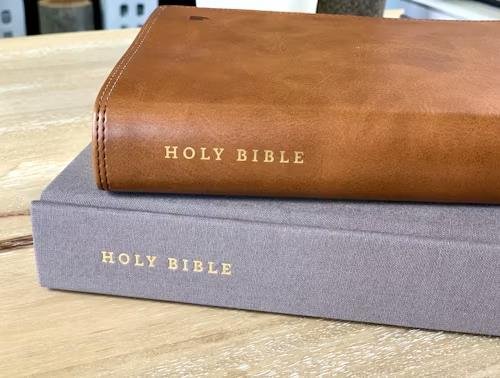People practicing Christianity consider the Bible of unfathomable importance. The Holy Text has a reputation for being the book of wisdom, including lessons and insights into daily life in the Words of God. The Bible comprises several books and incorporates many short stories, historical records, letters, and poetry, all combined to form an integrated whole. Christian followers and believers know that the Holy Text includes different books but needs more backstory and understanding. The article highlights insights into the historical records of the Bible’s existence.
Table of Contents
The Bible: Organization
The Holy Text consists of two categories:
- The Old Testament
- The New Testament
The Old Testament comprises 39 independent books, while the New Testament features 27 books. It concludes with 66 books in both categories.
The Old Testament Bible
The Old Testament includes documents from the creation of life until the birth of Jesus. The 39 books document Israel’s old heritage and history and serve as the basis of moral preachings of Jewish and Christian faiths. It is sub-categorized into:
- Pentateuch
- Historical Books
- Wisdom Books
- Prophetic Books
Pentateuch Books
The Pentateuch is one of the first books of the Hebrew Bible. It includes the ancient history of Israel and the beginning and creation of the people.
- Genesis
- Exodus
- Leviticus
- Numbers
- Deuteronomy
Historical and Wisdom Books
Historical and Wisdom Books represent the ancient history and the wisdom of Christian preachings and teachings. The Historical Books document the events ranging from conquering Canaan to the adjournment of the Kingdom of Israel and the exile of its people. It includes the books of Samuel (1 and 2), Ezra, and Esther. The Wisdom Books feature a collection of moral teachings, poetry, and narratives and includes books of Proverbs, Psalms, Job, Song of Songs, and Ecclesiastes.
Prophetic Books
The Prophetic Books document the history preached by different messengers of Gods or prophets. They represent the events or incidents of old Israel and the significance of those events and include literature like Jeremiah and Isaiah.
The New Testament
It is the second significant category of the Holy Text, covering the timeframe after the Old Testament period. Similar to the Old Testament, the New Testament Bibles comprise different sections:
- The Gospels
- Epistles
The four Gospels unify the first section of the New Testament. They tell the story of Jesus in the books of John, Luke, Mark, and Matthew. Each one delves into insights into Jesus’s life and missions and helps people understand more about the Holy Text.
Books of the Holy Text
There are 66 books in the Protestant Bible and 73 in Catholic Holy Text. As the richest anthology in the world, the difference is because of different literature written in varying languages at a different time in history.
Old Testament Books
The books of the Old Testament include:
- Genesis
- Leviticus
- Exodus
- Deuteronomy
- Numbers
- Judges
- Joshua
- Ruth
- Samuel-1
- Samuel-2
- Chronicles-1
- Chronicles-2
- Kings-1
- Kings-2
- Psalms
- Job
- Ezra
- Nehemiah
- Esther
- Proverbs
- Isaiah
- Ecclesiastes
- Song of Solomon
- Jeremiah
- Lamentations
- Daniel
- Ezekiel
- Joel
- Hosea
- Obadiah
- Amos
- Jonah
- Micah
- Habakkuk
- Nahum
- Haggai
- Zephaniah
- Malachi
- Zechariah
The New Testament Books
Like the Old Testament, the New Testament includes a list of books.
- Mark
- Matthew
- John
- Luke
- Acts
- Corinthians-1
- Corinthians-2
- Romans
- Galatians
- Philippians
- Ephesians
- Colossians
- Timothy-1
- Timothy-2
- Thessalonians-1
- Thessalonians-2
- Titus
- Hebrews
- Philemon
- James
- John-1
- John-2
- John-3
- Peter-1
- Peter-2
- Revelation
- Jude
How to Read the Bible Books?
The 66 books in the Holy Text have inter-linked narratives outlining God’s mission for redemption. The unification of 66 books documents God’s intention for people to understand the Christian life, biblical history, and God’s Word. If individuals study the books minutely, they will find that books don’t represent chronological patterns of events but in canonical order—for instance, the clubbing of sections like the Gospels and the Pentateuch.
Conclusion
Depending on the history (Romans, Hebrew, Greeks) and Christian beliefs (Protestants and Catholics), the Bible consists of several books. The whole paradigm of the Holy Text is fascinating and has always intrigued mankind. Understanding the different types of books and their intentions helps Christian followers and believers gain a better insight into God’s Words. Today, readers have access to multiple books of the Holy Text online and at physical bookstores.





